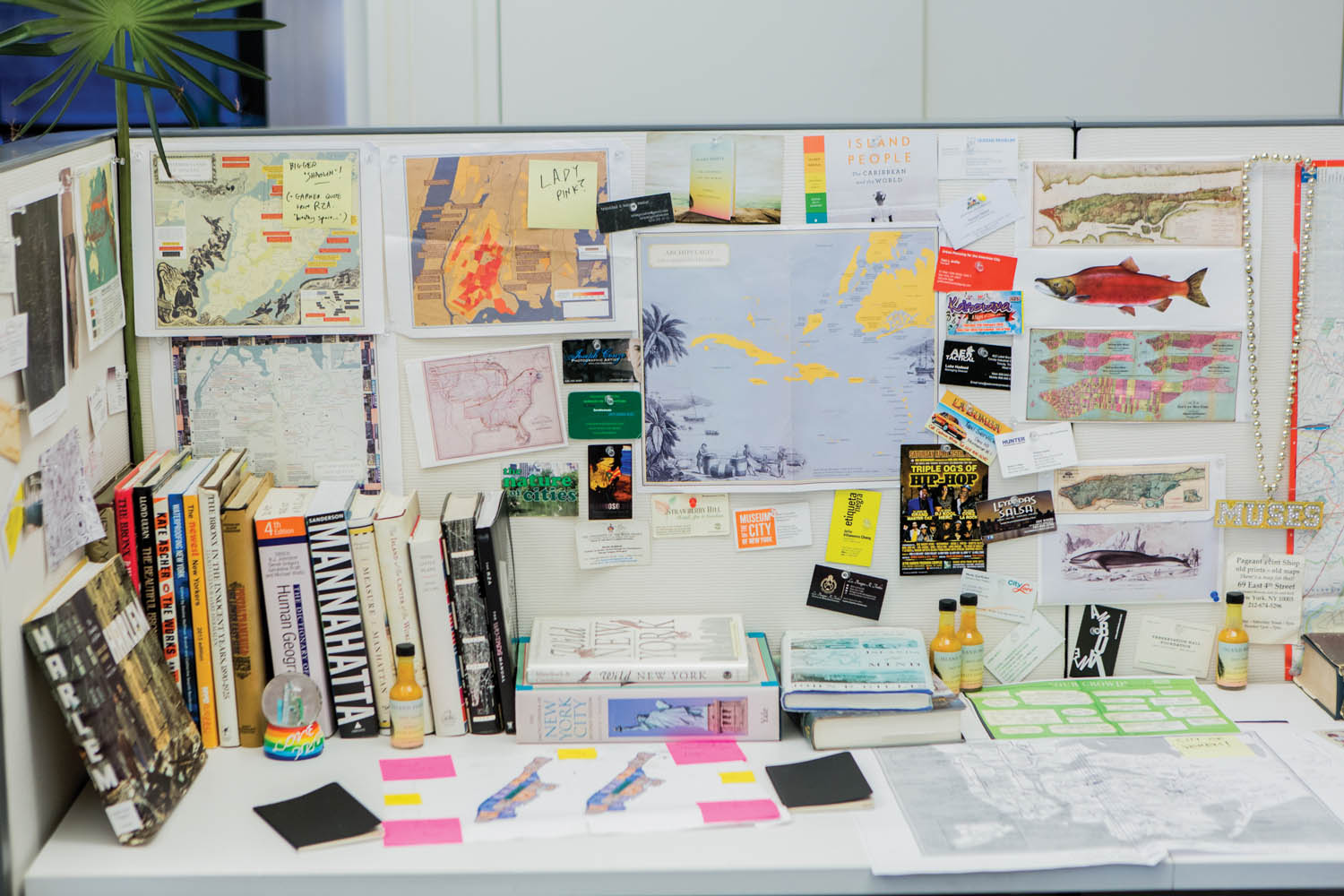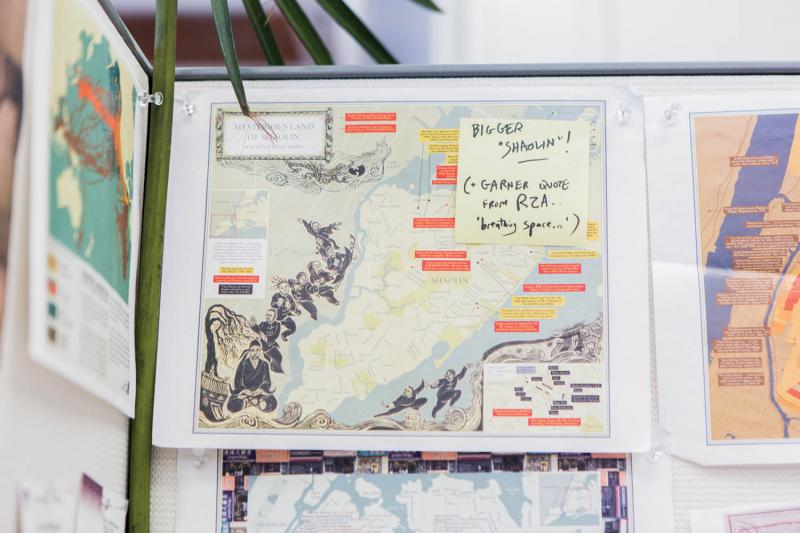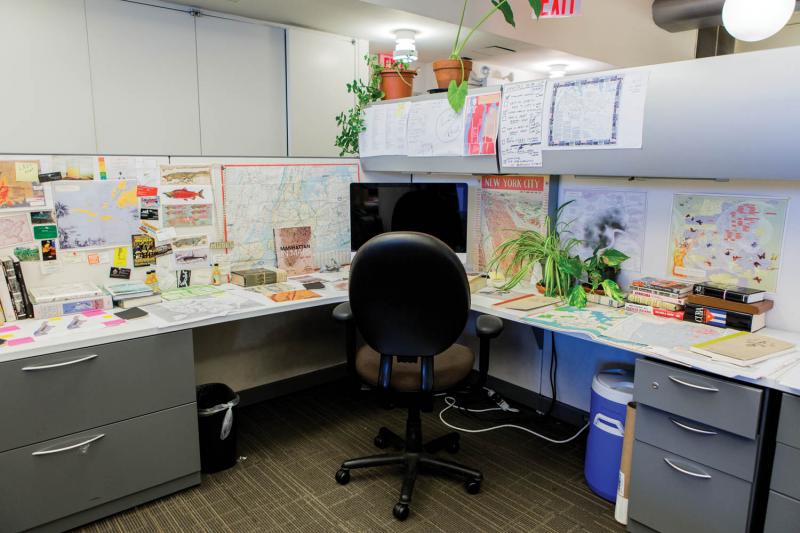Of all American cities, New York is perhaps the most visually iconic. Even its public transportation is embedded in the national imagination, with arguably more people having seen the map of its subway system than maps of their own hometowns.
“New York is one of these cities that so many people come to know before they set foot here,” says Joshua Jelly-Schapiro, coeditor, along with Rebecca Solnit, of Nonstop Metropolis: A New York City Atlas, the conclusion of a cartographic trilogy that began with San Francisco (Infinite City) and moved through New Orleans (Unfathomable City), all places that, as Jelly-Schapiro puts it, “are quintessentially American but sit apart from America in interesting ways.”
Over the course of these books—in which maps and essays work in tandem to explore each city’s themes—Solnit has been trying to “bring into the present the kind of wonderful information density of something that’s cartographic, linguistic, and visual.”
A lot of high-concept spitballing went into Nonstop over the last two years—wrestling with an almost overwhelming volume of information, much of it gravitating to Jelly-Schapiro’s cubicle at the Institute for Public Knowledge, where he is a visiting scholar. The limited real estate of the cubicle panels quickly became plastered with scraps of impulses and leads, tasks and proofs. As the project’s self-described “node, the person who was here all the time just collecting things,” he found comfort in the clutter. “Half of the job was going out and meeting people in the city, riding the subway. So it was nice to come back here—it felt quite real to just be in a cubicle in lower Manhattan. It seemed to fit.”
Nonstop comprises twenty-six maps that tell the story of New York through its riots, music, queer culture, faiths, mother tongues, playgrounds, and complaints, among other characteristics. The intent is to show how these forces evolved, traveled, morphed, and threaded to give the city its cultural and political shape. The maps also serve to remind us “what great paper maps can do,” Jelly-Schapiro says, “which is tell a story, organize information, and do all kinds of magical, immersive things.”
Which is, of course, a remarkably different immersion than navigation by phone. “These maps are made partly against the amorphous void through which most people move,” Solnit says, “the kind of small scale of a screen for when they need it. That’s nothing like having a map where you get a good sense of the lay of the land and the relationship between uptown and downtown and the river. You just obey your phone as it conveys only the information you need in the moment. You return to an unconstellated sky, you’re not perceiving meaning and patterns. With these maps, we’re really making constellations-—whether it’s gay life or wildlife—and when you connect them you start to see new patterns. And the story, in some sense, is the relationship between these places.”
Readers seem to sense this: Both Infinite City and Unfathomable City were popular—and not just in their cities of focus, which suggests an attraction to the narrative map—an art that offers a wealth of information with a touch of the sublime.
“There is some special joy in maps that is not like what I’ve seen from any other art form,” Solnit says. “People are hungry for that kind of information, the promise of orientation.”
“Cartophilia would seem to be a condition with which many of us are afflicted,” adds Jelly-Schapiro. “And it stands to reason: If forging a sense of identity by placing yourself in a larger story is a basic human want, so must be the need for making sense of a place. As a good friend of ours put it, a GPS unit can tell you where to go, but a good map can help deepen your sense of where you are.”
—Paul Reyes












